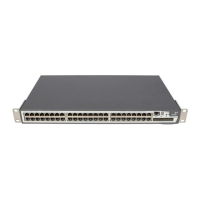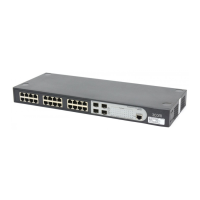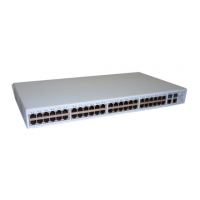1-2
Figure 1-1 A VLAN implementation
Advantages of VLANs
Compared with the traditional Ethernet, VLAN enjoys the following advantages.
z Broadcasts are confined to VLANs. This decreases bandwidth consumption and improves network
performance.
z Network security is improved. Because each VLAN forms a broadcast domain, hosts in different
VLANs cannot communicate with each other directly unless routers or Layer 3 switches are used.
z A more flexible way to establish virtual workgroups. VLAN can be used to create a virtual
workgroup spanning physical network segments. When the physical position of a host changes
within the range of the virtual workgroup, the host can access the network without changing its
network configuration.
VLAN Principles
VLAN tag
To enable a network device to identify frames of different VLANs, a VLAN tag field is inserted into the
data link layer encapsulation.
In 1999, IEEE issues the IEEE 802.1Q protocol to standardize VLAN implementation, defining the
structure of VLAN-tagged packets.
In traditional Ethernet data frames, the type field of the upper layer protocol is encapsulated after the
destination MAC address and source MAC address, as shown in
Figure 1-2
Figure 1-2 Encapsulation format of traditional Ethernet frames
In
Figure 1-2 DA refers to the destination MAC address, SA refers to the source MAC address, and Type
refers to the upper layer protocol type of the packet. IEEE 802.1Q protocol defines that a 4-byte VLAN

